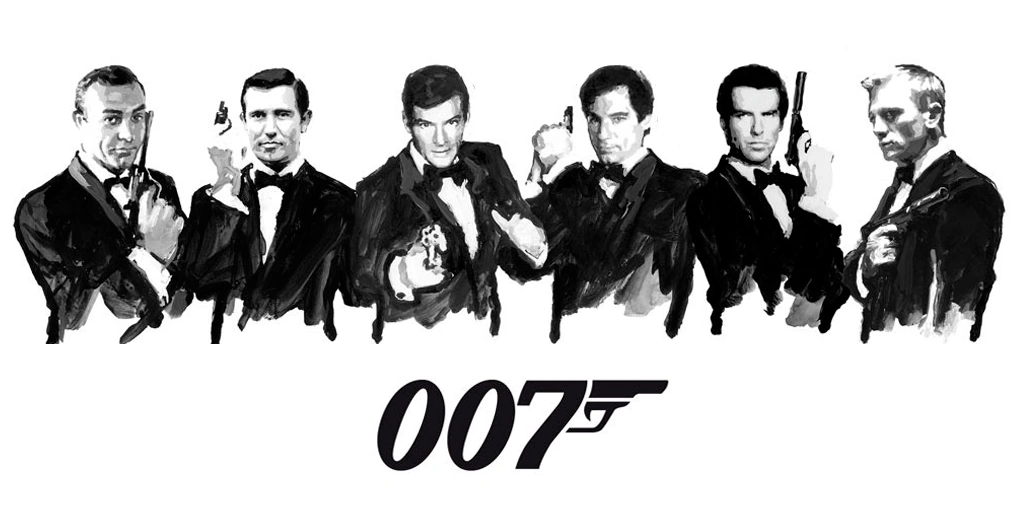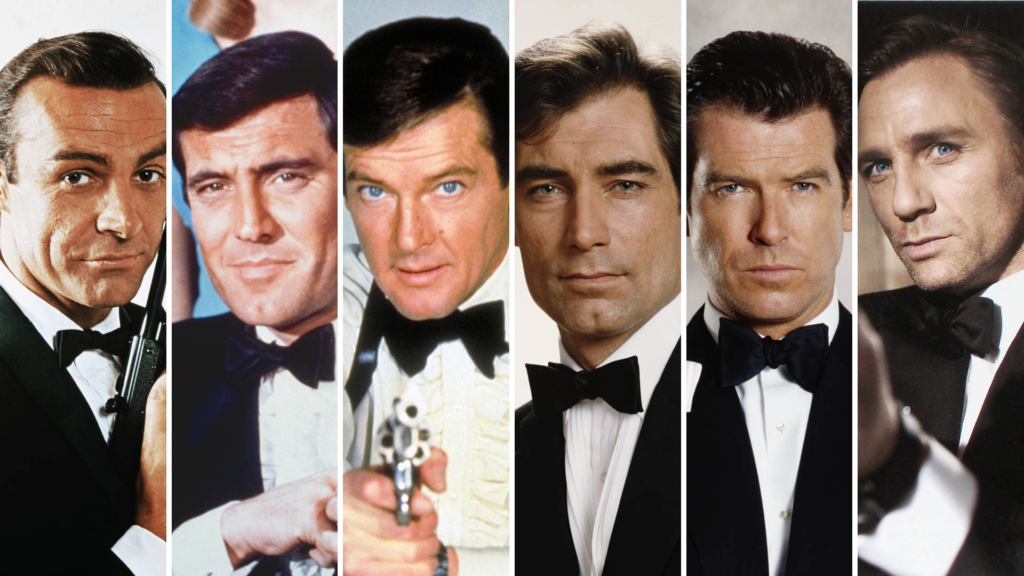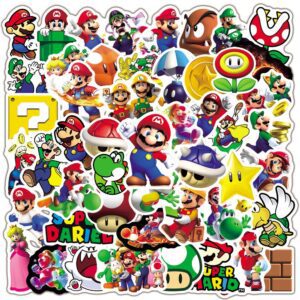James Bond, the suave and iconic secret agent, has captivated audiences for decades with his thrilling adventures. But how did this legendary character come to be? To understand the birth of 007, we must turn to the pages of Ian Fleming’s novels. Ian Fleming, a former intelligence officer himself, introduced the world to James Bond in 1953 with the publication of “Casino Royale.” This debut novel laid the foundation for a series that would become a global sensation.
“Casino Royale” showcased Bond’s intriguing personality, impeccable style, and his penchant for danger. The novel’s success prompted Fleming to continue penning more Bond stories, which further solidified the character’s popularity. However, it was in 1962 that Bond truly made his mark on the big screen. With the release of “Dr. No,” starring the charismatic Sean Connery, James Bond leaped from the pages to become a cinematic sensation.
The transition from the novels to the film franchise was a monumental moment for Bond, propelling him into a realm of global recognition and cementing his status as a cultural icon. From the very beginning, Bond captured our imaginations, and his timeless adventures continue to thrill audiences to this day. In the following sections, we will explore the different eras and actors who have portrayed Bond, diving into their significant contributions to the franchise’s enduring legacy.
Dr. No to Diamonds Are Forever: The Connery Era
The Connery era marked the beginning of James Bond’s cinematic journey, introducing audiences to the iconic portrayal by Scottish actor Sean Connery. With his suave demeanor, undeniable charm, and rugged charisma, Connery perfectly embodied the suave secret agent, elevating Bond to new heights of popularity.
During this era, several key films established the foundation of the Bond franchise. “Dr. No” (1962) was the debut film, setting the stage for what would become a long-lasting franchise. This thrilling spy adventure took Bond to exotic locations, introduced the suave Bond girl concept, and established the formula that would captivate audiences for decades to come.
One of the most memorable films from this era is “Goldfinger” (1964). This film solidified Bond’s status as a cinematic legend. It introduced the suave villain Auric Goldfinger, played brilliantly by Gert Fröbe, and featured some of the most iconic Bond moments, including the famous car, the Aston Martin DB5, equipped with gadgets and weaponry.
“Diamonds Are Forever” (1971) marked Connery’s final official outing as Bond in the Eon Productions series. This film continued the trend of glamorous locations, intense action sequences, and captivating storylines. Connery’s portrayal of 007 left an indelible mark on the franchise, shaping the image of Bond that would resonate with audiences for years to come.
Connery’s performance as Bond had a profound impact on the franchise. His charismatic and distinct interpretation of the character laid the groundwork for future actors to follow in his footsteps. The success of the Connery era set the bar high for subsequent Bond films, establishing the tone, style, and intrigue that have become synonymous with the series.
In conclusion, the Connery era of James Bond films showcased Sean Connery’s remarkable portrayal of the suave secret agent, propelling the franchise to great success. Films like “Dr. No,” “Goldfinger,” and “Diamonds Are Forever” demonstrated the essence of Bond’s world, filled with thrilling espionage, glamorous settings, and unforgettable characters. Connery’s legacy as the original 007 will forever be imprinted in the history of cinema, influencing future Bond actors and leaving an enduring mark on the franchise.
The Roger Moore Era: A Lighter Tone and Global Adventures
Roger Moore left an indelible mark on the James Bond franchise during his tenure as the suave super-spy. Taking over the iconic role from Sean Connery, Moore brought a distinct charm and sophistication to the character, while also introducing a lighter and more humorous tone to the films.
Throughout his seven-film run as James Bond, Moore captivated audiences with his effortless charisma and impeccable style. He perfectly embodied the suave and debonair nature of the character, making him an instant fan-favorite. Moore’s Bond was known for his impeccable fashion sense, often seen wearing tailored suits, driving luxurious cars, and sipping martinis with flair.
During the Roger Moore era, the James Bond films took audiences on thrilling global adventures. One standout film from this period was “Live and Let Die,” which featured Bond exploring the world of voodoo in Jamaica and New Orleans. This film showcased Moore’s ability to handle both the action-packed and comedic moments, striking a perfect balance of excitement and humor.
“The Spy Who Loved Me” became an instant classic, hailed as one of the best Bond films to date. It showcased Moore’s ability to handle intense action sequences while still maintaining a sense of wit and charm. From the iconic opening ski chase to the underwater lair, this film had everything a Bond fan could ask for.
Perhaps one of the most memorable films of the Roger Moore era was “Moonraker.” It took Bond to new heights, both literally and figuratively, as he ventured into space to thwart a nefarious plot. This film showcased the franchise’s willingness to push the boundaries of technology and embrace extravagant set pieces.
With Roger Moore at the helm, the Bond films shifted towards a lighthearted and humorous approach, incorporating witty one-liners and amusing innuendos. While some critics argued that the films became a bit campy during this era, they undeniably had a lasting impact on the franchise and helped solidify Moore’s place in Bond history.
The Timothy Dalton Interlude: A Darker and Intense Bond
A significant shift occurred within the James Bond franchise when actor Timothy Dalton took on the role of Agent 007. Dalton’s portrayal was markedly different from his predecessors, Sean Connery and Roger Moore. The Timothy Dalton era, though short-lived, brought a darker and more intense take on the iconic character, resonating with fans in its own unique way.
In his first Bond film, “The Living Daylights,” Dalton immediately left a lasting impression. The movie introduced a grittier Bond, emphasizing realism and eschewing some of the fantastical elements prevalent in previous installments. Dalton’s performance showcased a more vulnerable and ruthless secret agent, staying true to the character as envisioned by Ian Fleming.
Moving forward, “Licence to Kill” took the intense and dark tone of Dalton’s Bond to new heights. The film explored a deeply personal vendetta that pushed Bond to seek revenge against a drug lord who maimed his friend. It demonstrated a departure from the traditional espionage-driven plots, delving into a more personal and emotionally charged narrative.
One notable aspect of the Dalton era was its commitment to realism. The films strived to depict Bond as a skilled and determined professional, shedding the glamorous and often flamboyant style of the previous eras. Dalton’s Bond was focused, gritty, and willing to push boundaries to complete his mission.
These movies exemplified the franchise’s ability to adapt and evolve. While Dalton’s era marked a departure from the classic Bond formula, it successfully offered a fresh take on the character that resonated with a subset of fans who appreciated the darker and more realistic tone.
Although the Timothy Dalton era was short, its impact on the James Bond franchise cannot be overlooked. Dalton’s portrayal brought depth and complexity to the character, showcasing a side of Bond that was more relatable and grounded. The transition paved the way for future Bond actors to experiment with different interpretations, ensuring the longevity and relevance of the iconic series.

The Pierce Brosnan Era: A Return to Glamour and Spectacle
With the dawn of the Pierce Brosnan era, the James Bond franchise experienced a rejuvenation, returning to its roots of glamour and spectacle. Brosnan stepped into the iconic role with suave sophistication, captivating audiences worldwide. His portrayal of Bond exuded charm and charisma, leaving an indelible mark on the series.
During this era, several notable films graced the silver screen, including “GoldenEye,” “Tomorrow Never Dies,” and “Die Another Day.” Each of these blockbusters showcased the perfect blend of heart-pounding action, captivating romance, and cutting-edge high-tech gadgets synonymous with the James Bond brand.
“GoldenEye,” Brosnan’s debut as the British secret agent, set the stage for his impressive tenure. The film not only reintroduced 007 to a new generation of moviegoers but also revitalized the franchise. The combination of thrilling action sequences, a gripping storyline, and a memorable villain played by Famke Janssen made “GoldenEye” an instant classic.
In “Tomorrow Never Dies,” Brosnan demonstrated his versatility as Bond. He effortlessly balanced suaveness with vulnerability, making audiences root for him in each dangerous encounter. The film’s theme of media manipulation and intense action sequences, including a breathtaking motorcycle chase through the streets of Saigon, kept viewers on the edge of their seats.
“Die Another Day” marked Brosnan’s final outing as the legendary spy, and it epitomized the extravagance and larger-than-life nature of the franchise. The movie featured a spectacular ice palace, heart-stopping stunts, and an unforgettable showdown between Bond and the enigmatic Gustav Graves, played by Toby Stephens. While the film received mixed reviews, it unquestionably left a lasting impact on the Bond legacy.
The Pierce Brosnan era of James Bond movies epitomized the essence of the character, combining action-packed thrills, captivating romances, and state-of-the-art gadgetry. These films remain cherished by movie enthusiasts and solidified Brosnan’s status as one of the most beloved actors to portray the iconic spy. Through this era, the James Bond franchise carved its place as a pillar of the action genre, captivating audiences with its glamorous and spectacular adventures.
The Daniel Craig Era: A Modern and Gritty Reboot
Daniel Craig’s portrayal of James Bond ushered in a new era for the franchise, offering a modern and gritty take on the legendary spy. With films like “Casino Royale,” “Skyfall,” and “Spectre,” Craig reinvigorated the character, captivating both old and new audiences with his raw and intense performance.
“Casino Royale” marked Craig’s debut as 007, presenting a younger and more vulnerable Bond. The film served as a reboot, taking audiences back to Bond’s early days as a newly minted agent. It showcased a much-needed character development, delving into Bond’s origins, his first mission, and his grappling with love and betrayal. This fresh approach breathed life into the franchise, setting the stage for future success.
One of the defining aspects of the Daniel Craig era is the grounded and darker tone of the films. Departing from the over-the-top gadgets and fantastical plots of previous entries, these movies brought a sense of realism and grittiness to the forefront. Bond was no longer invincible; he faced physical and emotional challenges that tested his resilience and resolve.
“Skyfall” stands as a remarkable highlight of Craig’s tenure. It not only delved deeper into Bond’s character but also explored his complex relationship with M, his trusted superior. The film masterfully intertwined thrilling action sequences with introspective moments, revealing the depth and vulnerability of the iconic spy. With its stunning cinematography and a compelling storyline, “Skyfall” cemented Craig’s Bond as one of the most memorable iterations.
Continuing the narrative arc of the previous films, “Spectre” further developed Bond’s character while bringing back classic elements of the franchise. Craig’s performance showcased the emotional toll that years of pursuit and espionage had taken on the spy. The film explored Bond’s haunted past and provided closure to some of the lingering questions surrounding his origins.
Overall, the Daniel Craig era of James Bond movies revitalized the franchise and captivated audiences with its modern and gritty approach. With his exceptional acting skills, Craig reinvented the character, infusing Bond with a raw and authentic edge that resonated with viewers. The grounded tone, exploration of character depth, and intense storytelling have shaped this era as a significant contribution to the James Bond legacy.
Stay tuned for the next section, where we’ll take a deeper look into the world of James Bond beyond the main films, exploring spin-offs, parodies, and the future of the franchise.
Beyond Bond: Spin-Offs, Parodies, and the Future
As we journey through the timeless adventures of James Bond, it is impossible to overlook the influence this iconic character has had on popular culture. Beyond the official Bond films, there have been several spin-offs and parodies that have paid homage to the suave spy.
One notable spin-off includes “Never Say Never Again,” a 1983 film featuring Sean Connery returning to the role of Bond. Although not part of the official franchise, it provided a unique take on the character and delighted fans with its nostalgic flair. Additionally, the quirky and comedic “Casino Royale (1967)” showcased an alternative interpretation of Bond, exploring the possibilities of a satirical approach.
The impact of Bond on the entertainment industry extends further with parodies and homages that lovingly spoof the franchise. Films like “Austin Powers” and “Kingsman: The Secret Service” playfully embrace the stylistic elements and tropes associated with Bond, creating their own distinct universe of secret agents and espionage.
Looking towards the future, the James Bond series continues to captivate audiences worldwide. With the highly anticipated release of “No Time to Die,” starring Daniel Craig in his final outing as Bond, fans eagerly await the next chapter in the franchise. Speculation abounds regarding potential future actors to step into the iconic role and the direction the series will take in the years to come.
FAQs
Q: What was the first James Bond novel and who wrote it?
A: The first James Bond novel is “Casino Royale,” written by Ian Fleming.
Q: Who was the first actor to portray James Bond in the film franchise?
A: Sean Connery was the first actor to portray James Bond in the film franchise.
Q: Did the James Bond films become more lighthearted and humorous during a specific era?
A: Yes, the Roger Moore era marked a shift towards a more lighthearted and humorous approach in the James Bond films.
Q: Which actor brought a darker and more intense tone to the Bond character?
A: Timothy Dalton portrayed James Bond with a darker and more intense tone during his short-lived era.
Q: What distinguishes the Daniel Craig era of Bond films from the previous ones?
A: The Daniel Craig era is characterized by a modern and gritty reboot of the Bond character, focusing on grounded stories and character development.













